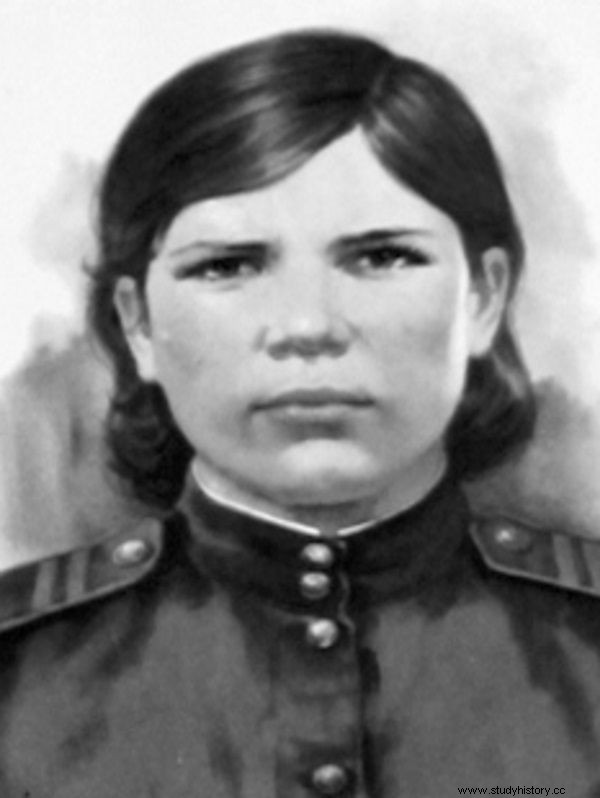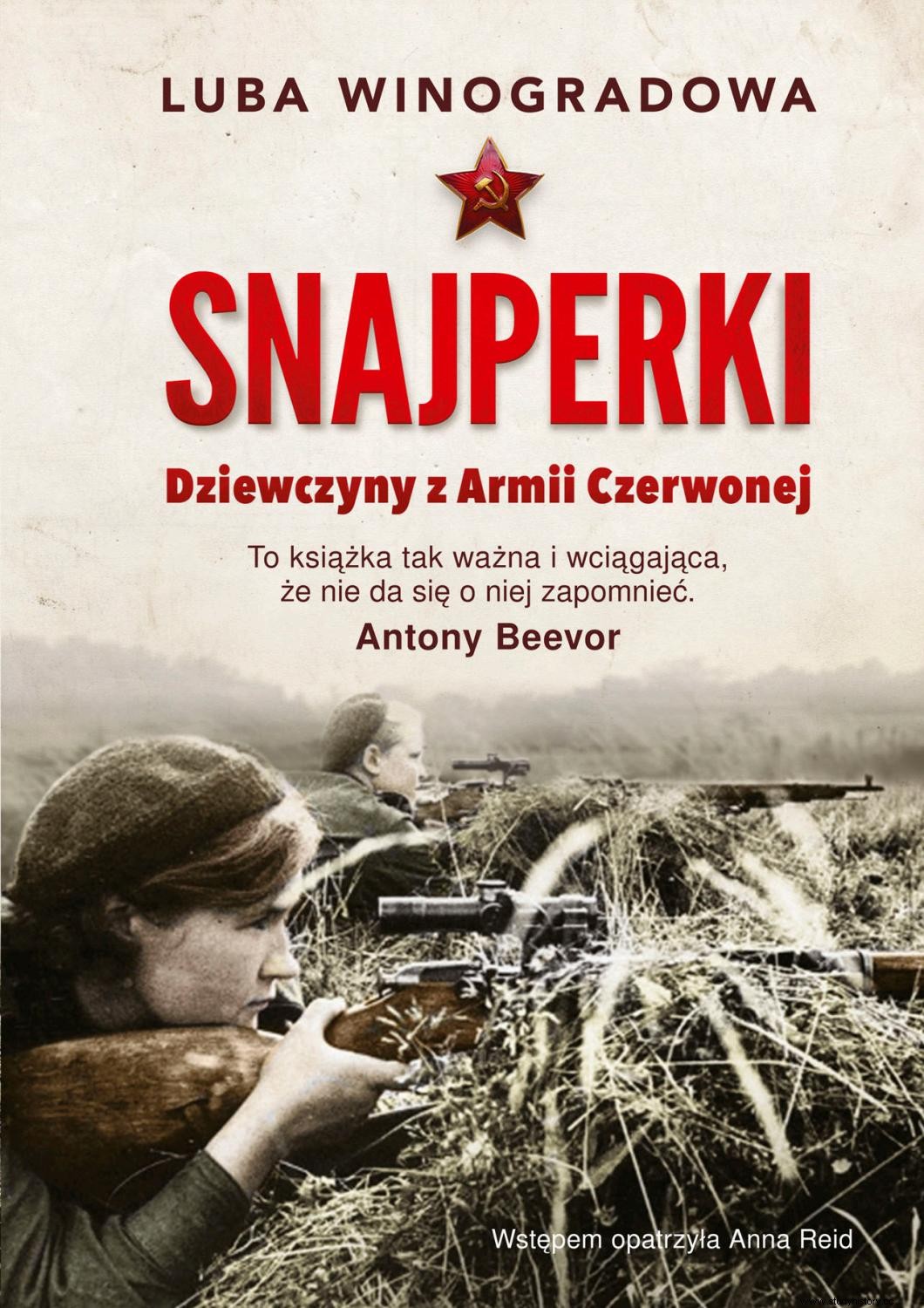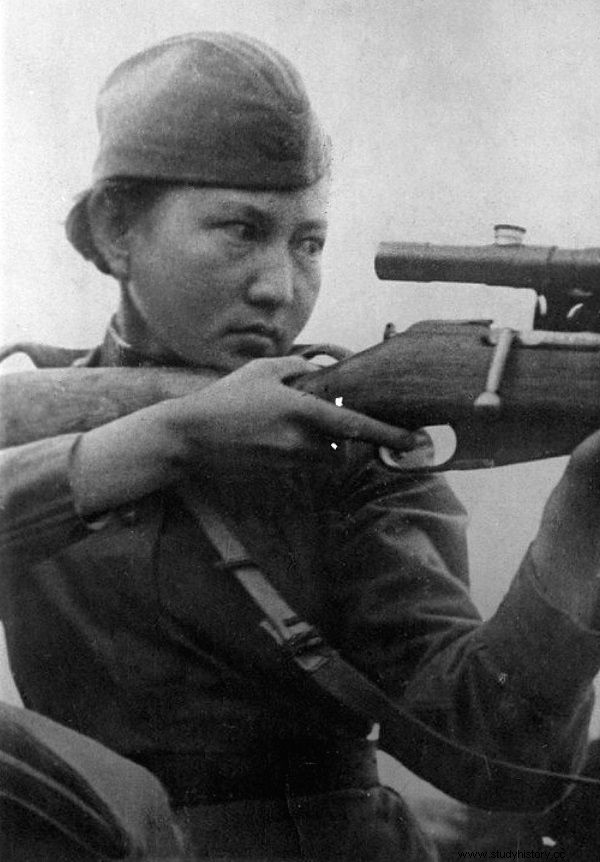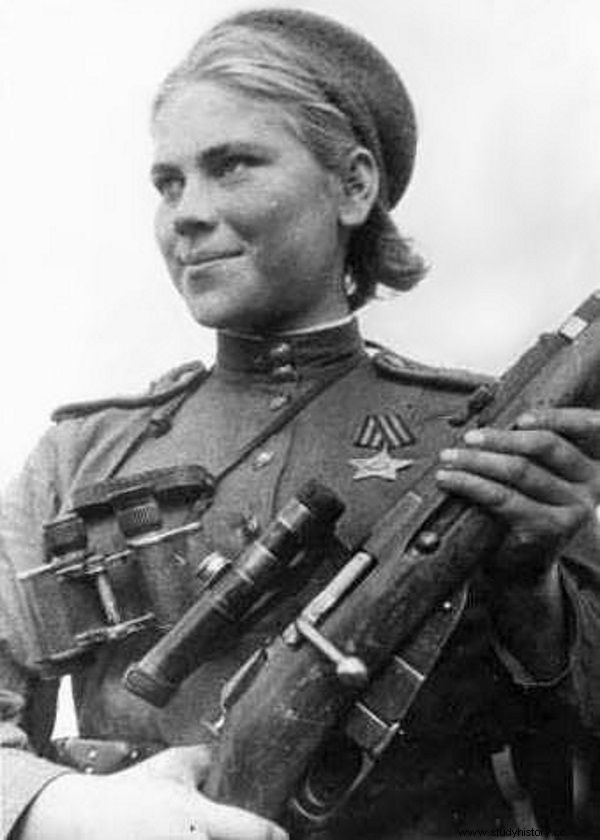When the army was losing thousands of soldiers every day and the chances of victory waned, it was time for truly desperate steps. For the commanders, one of them was to allow women to fight directly. These not only proved successful in their new role, but also turned out to be the real terror of the Nazis. The toughest guys would not be ashamed of their achievements.
Soviet snipers played a significant role in repelling the German invasion of Stalin's state. After the war, however, they seemed to completely sink into the ground. With few exceptions, the communist vision of the world did not fit women ruthlessly killing the enemy at the front. Their achievements were depreciated, and civilians were nasty gossiping that the task of the female soldiers was not to fight, but to relieve the real soldiers. Even their own husbands - often met in the trenches - advised them to keep silent about their past.
These fierce, brave and extremely effective female soldiers prove that the Soviet women who fought in World War II were no worse than their colleagues. Below are some of them.
Tatiana Kostyrina
Tatiana, called Tania, was born to a peasant family in the city of Kropotkin on the Kuban. Little is known about her life before joining the Red Army that she finished eight years before joining the Red Army. She served in the army from 1942. She finished a course at a sniper school and after six months she went to the front. This inconspicuous girl hid for hours on the enemy. In the fights for the liberation of Crimea and Kuban, she managed to score 125 confirmed kills , 15 of which in her last fight. All this at the age of only 19.

Tatiana Kostyrina (photo:public domain)
As Lubov Winogradowa emphasizes in the book that has just been published "Snipers. Girls from the Red Army ” Kostyrina was wounded twice, but returned to her unit each time. When she participated in the heavy battle for the town of Ajimushkai, she found herself in a difficult situation. Most of the officers were killed in combat and there was no one to lead the infantry battalion into the attack.
Then a young Tania stood at the head of the unit, and it was she who picked up the soldiers. Unfortunately, she did not survive this clash. Initially, she was buried in a mass grave in Ajimushkai, but later her body was found and buried in the military cemetery in Kerch, where young people still lay flowers.
Nina Petrov "Mama Nina"
Contrary to most of the volunteers who volunteered to the Red Army to avenge their native village or their relatives killed in battle, Nina Pavlovna Petrov was not a young girl. Initially, she was even a little laughed at that she was too old for such escapades:in the year of the outbreak of World War II, she was already 48 years old! As soon as she was given a rifle in her hand, she managed to shut the mouth of all doubters. Even before the war, he practiced sports intensively - hockey, swimming, skiing, basketball and ... shooting.
After the end of the Winter War with Finland, in which she participated, she underwent a sniper course. In Leningrad, in the Spartak organization, she taught physical education and shooting. When the Third Reich attacked the USSR, it joined the Red Army. She very quickly began to increase her score of eliminated enemies, which ultimately amounted to 107 Germans shot , however, it can, in a sense, be credited with thousands of hits. By what way?
Petrov trained over 500 snipers, each of whom killed many opponents, and later commanded more shooters at the front. She also fought within the present borders of Poland - in Elbląg (Battle of Elbing). As Winogradowa writes in the book "Sniperki. Girls from the Red Army ” :
Petrova - a slim, athletic soldier - was called "mother" in the regiment. Her biographer describes her as a very caring, affectionate person. (...) [She was remembered] as more strict, disciplined and uncompromising than many female commanders at the school in Podolsk.

The text is based on the book by Luba Winogradowa entitled “Sniperki. Girls from the Red Army "(Znak Horyzont 2018).
Moldagulov's Aliyah
Alija, originally from Kazakhstan and born in 1925, lost her parents in early childhood. She moved to Almaty with her uncle, from where they moved to Leningrad in 1935, where the girl was enrolled in school. In the same year that the USSR and the Third Reich attacked Poland, fourteen-year-old Alija ended up in an orphanage.
During the siege of Leningrad (in 1942), she was evacuated together with other pupils from the orphanage. At the age of seventeen, she tricked the draft commission into being older, slipped into the military and entered the sniper school. One of the heroes of Winogradowa's book "Snipers" remembered her from the course. :
Of the girls who died as heroines, Kława only remembered the small and skinny Aliya Moldagulova. This extremely mobile girl was known also in other companies. Kława Loginova recalled their first meeting:they had barely brought them to Amieriev, Aliyah came running and asked if they had any food. When they denied it, she "ran briskly" to find out what was going on.

Aliyah Moldova (photo:public domain)
Time has shown that the petite, gentle-faced girl has become a real killing machine, although the command, due to her posture, wondered whether to send her to the front at all. When she turned eighteen, as Igor T. Miecik writes in the book Katyusha with a bayonet , had a sniper school diploma in her pocket, and thirty-two hits entered in a sniper book. The combination of an accurate eye and bravado made her an extremely dangerous opponent.
Not only did she go out on sniper hunts (a total of 91 killed ), but also liked to attack the Germans directly. She could sneak up on the bunker and throw grenades into it, or disguise herself as a peasant girl and kill one of the two Nazis from the patrol with his own weapon and capture the other. She fought in the trenches and led the soldiers of her company to attack the bayonets.
Roza Szanina
Gifted with a ruddy face, fair hair and eyes, Roza Shanina came from Arkhangelsk. On a daily basis, as a kindergarten teacher, she looked after a group of laughing kids. She dreamed that after the war she would go to university, she was drawn to study. In December 1941, Roza's brother died during the siege of Leningrad. Perhaps it was the impulse that changed her priorities. She reported to a military police station, as a volunteer, she found herself in a sniper school, and from there she ended up on the front line. She had 59 confirmed hits , of which as many as 12 Germans killed by her were snipers.

Roza Szanina (photo:public domain)
Shanina liked to fight. According to the diary she left behind, she would prefer never to rest, and she would only come out of the front line to sleep, change into something dry and eat. Roza not only shot well, she was also lucky to catch the Germans alive. One of such situations, which took place near a Polish village, she described in her diary, which quotes Winogradov, without sparing self-mockery.
I went back to the first line and smeared myself blurry that I was in a dangerous place. As I was crossing the bridge, I suddenly looked down at the overgrown gorge below and saw a fric. Instinctively, I said:»Hände hoch!« And I saw six hands raise ... One of them was talking, but I did not understand anything. In German, I only knew the words faster and forward, so that's what I shouted. Then they crawled out of the ravine and I took their weapons, watches, cream, mirrors and so on.
The sniper rifle, which was in full combat readiness, undoubtedly knocked the Germans off the hook. As she herself recalled, in camouflage clothes, with a fin, with grenades and a rifle at the ready, she looked like a bandit as she led three prisoners through the village holding them at gunpoint.
***
According to many historians, the most effective and dangerous Soviet sniper rifle in the world was Lyudmila Pavlichenko, but Luba Vinogradova in her book points out that nothing makes sense in the heroine's story. She does not dispute that Pawliczenko fought bravely, but nevertheless pays attention to other female veterans that are worth remembering. That is why the most famous sniper rifle was not included in our list, but we have devoted a separate article to it.
Information sources:
- Aleksijewicz S., War is nothing like a woman , Black 2015.
- Markwick R.D, Cardona E. Ch., Soviet Women on the Frontline in the Second World War, Palgrave McMillan 2012.
- Miecik I.T., Katyusha with a bayonet, PWN 2014.
- Pegler, M., Out of Nowhere:A History of the Military Sniper, Osprey Publishing 2006.
- Winogradowa L., Sniperki. Girls from the Red Army, Horyzont 2018 mark.
